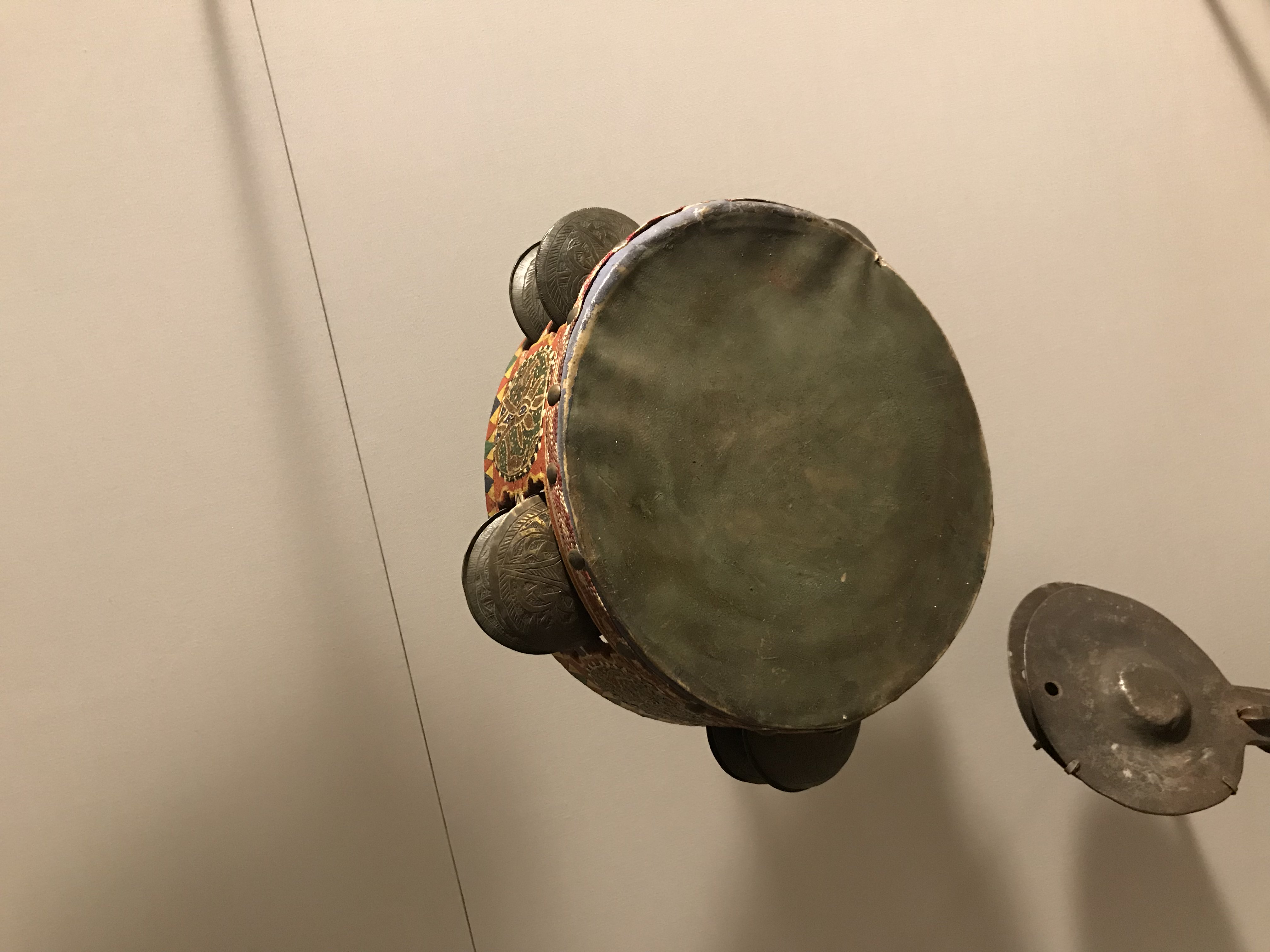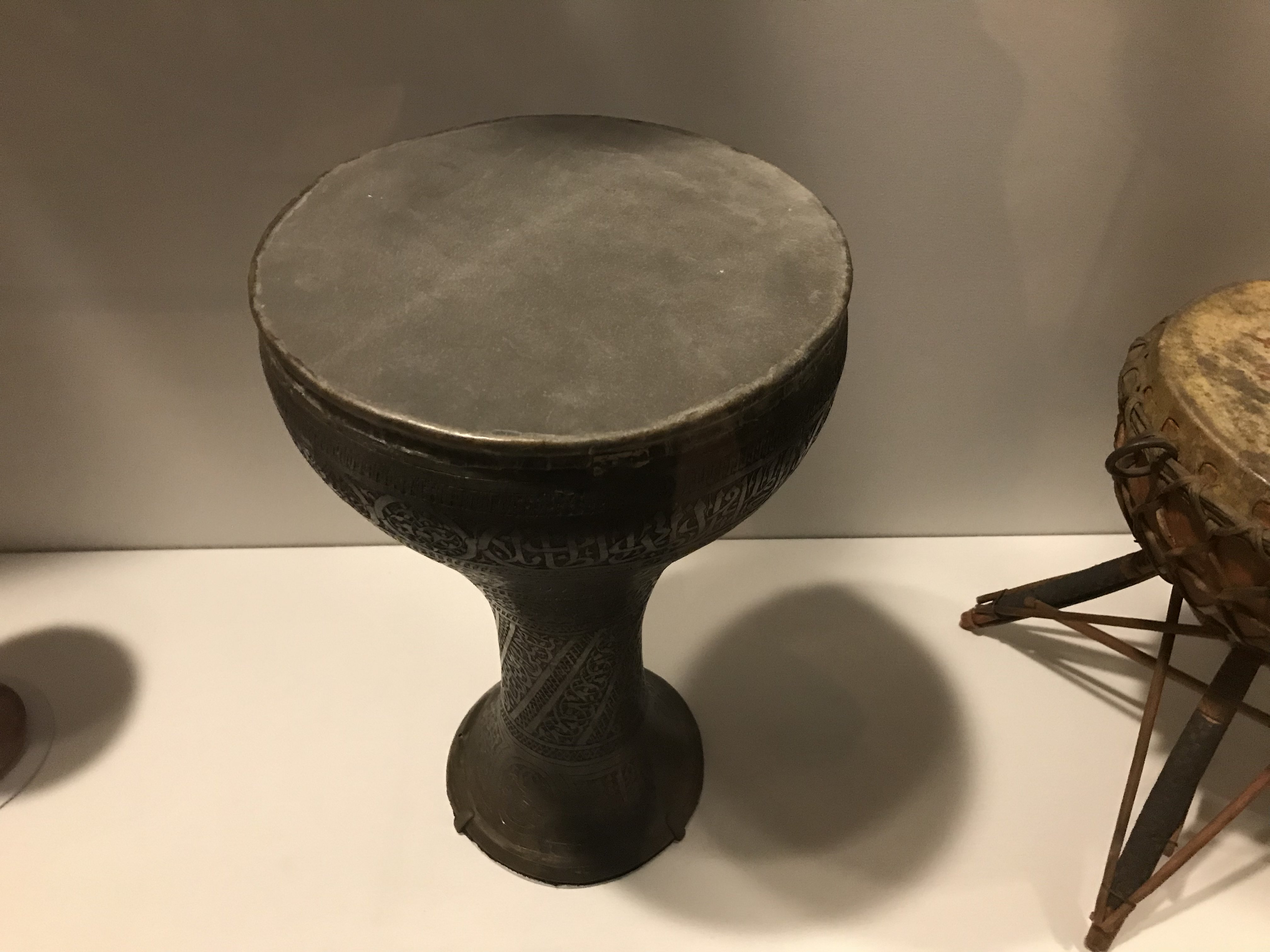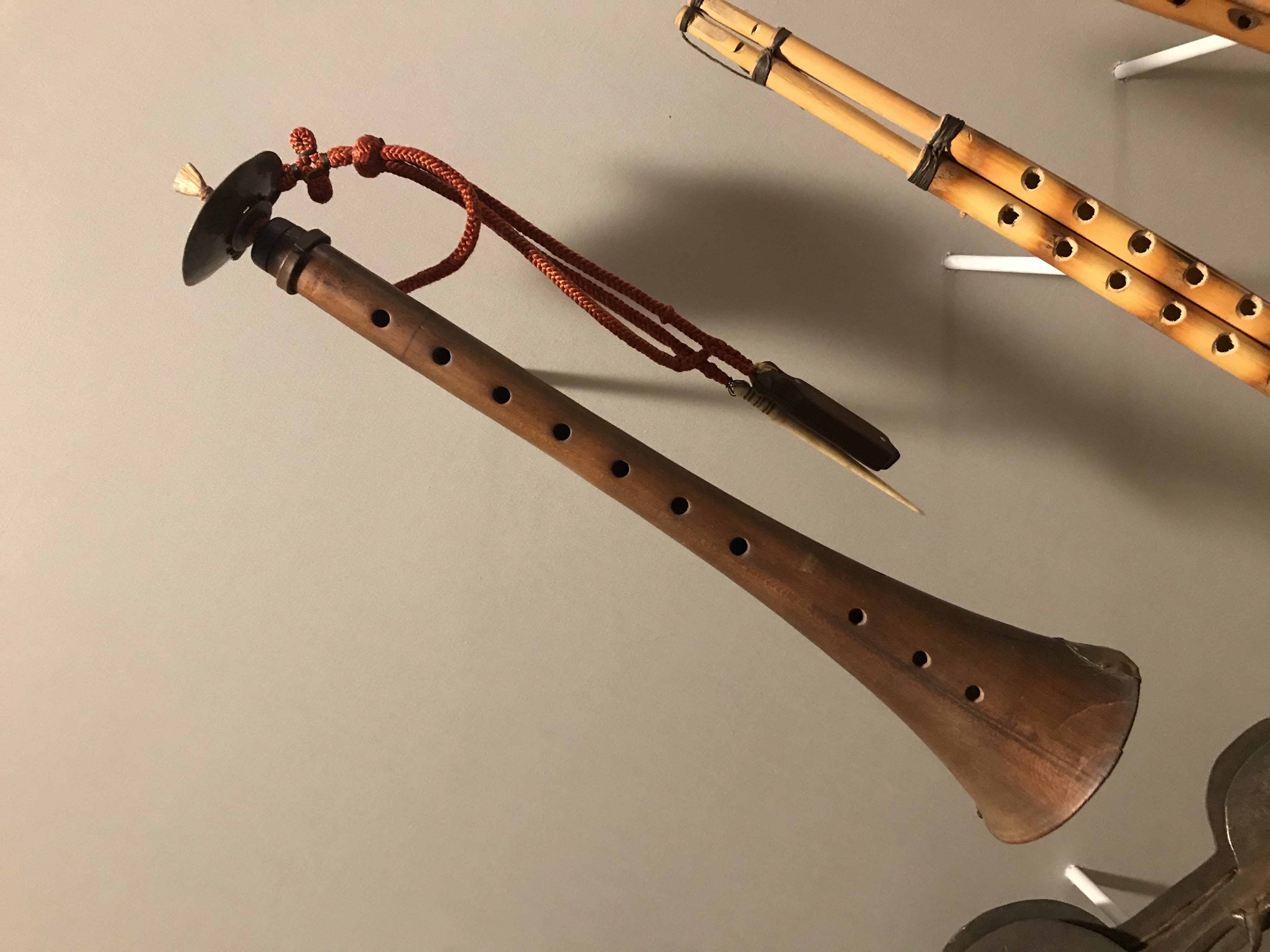Arabic Music
Late AntiquityThe music of the Middle East is part of an aural tradition that goes back centuries. When translated into Western terminology, Arabic music is considered microtonal, meaning distinct pitches are often less than a semitone apart. Although not completely accurate, maqamat can be notated using quarter-tones, or half-semitones.

Arabic music is primarily melodic and does not make extensive use of harmony. Performers often improvise on pitch groups called jins, which are combined into scale modes called maqamat. Maqamat are recognizably heard in the adhan, the Islamic call to salat (daily prayer.) One of the most distinctive and recognizable is the maqam saba:

The distinctive interval of this maqam is the augmented second from G♭ → A.
As the Caliphate expanded, many musical traditions of Northern Africa blended with Arabic music, creating a unique Middle Eastern style.
.png)
Ud
The ud is a Middle Eastern/Persian instrument dating back to the seventh century, made of various types of wood including mahogany, spruce, and rosewood.
Tar
This is a wooden drum from Morocco; it is also called a "daff" or a "riqq" in various other parts of Africa.
Darabukka
This is an Algerian goblet drum made from brass. A variety of different hand positions can be used to create different tonal effects.
